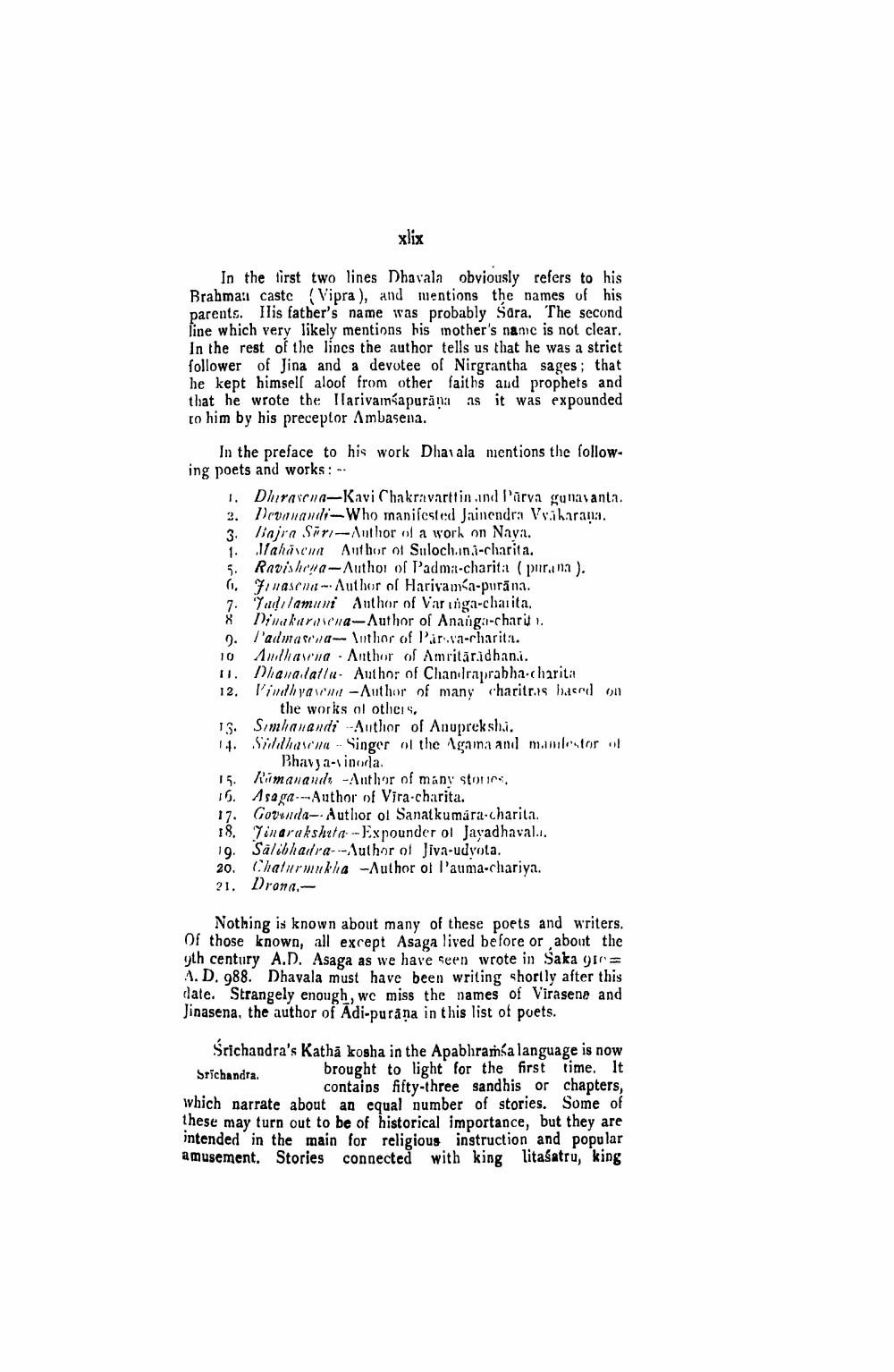________________
xlix
In the first two lines Dhavala obviously refers to his Brahmar caste (Vipra), and mentions the names of his parents. Ilis father's name was probably Sara. The second line which very likely mentions his mother's name is not clear. In the rest of the lines the author tells us that he was a strict follower of Jina and a devotee of Nirgrantha sages; that he kept himsell aloof from other faiths and prophets and that he wrote the Ilarivainsapuräna as it was expounded to him by his preceptor Ambasena.
In the preface to his work Dhavala mentions the following poets and works: -.
1. Dhuravcua-Kavi Chakravarttin.und Parva gunasanta. 2. Dovavani-Who manifested Jainendra Vaharana. 3. linjra Siri-Author of a work on Naya. 1. Jahivenn Author of Sulochinj-charita, 5. Ravishena-Author of Padma-charita (purna). i, nasci - Author of Harivanka-purāna. 7. Ya lamuri Author of Varunga-charita. 8 Dimakursena-Author of Ananga-charit. 1. l'adma Sena Iuthor of Lir.ca-chariti. 10 Amthavna Anthor of Amritāridhani. 11. Dhavalatlu. Author of Chandraprabha charita 12. limithyaven - Author of many charitr.rs buced on
the works ol others, 13. Simhanandi -Author of Anuprekshi. 14. Sulihavia - Singer of the Againa and mamostor
Bhavya-vinoda. 15. Rimanand -Author of many stone 16. 1 saga--Author of Vira charita. 17. Gooruda-. Author ol Sanatkumára-charita. 18. Yingrakshita--Expounder ol Jayadhaval... 19. Salibhailra--Iuthor of Jiva-udyola. 20. Chaturmukha -Author of l'auma-chariya. 21. Drona.
Nothing is known about many of these poets and writers. Of those known, all except Asaga lived before or about the yth century A.D. Asaga as we have seen wrote in Saka gin= 4. D. 988. Dhavala must have been writing shortly after this date. Strangely enough, we miss the names of Virasena and Jinasena, the author of Adi-purana in this list of poets.
Srichandra's Kathā kosha in the Apabhrama language is now Srichandra
brought to light for the first time. It
contains fifty-three sandhis or chapters, which narrate about an equal number of stories. Some of these may turn out to be of historical importance, but they are intended in the main for religious instruction and popular amusement. Stories connected with king litasatru, king




